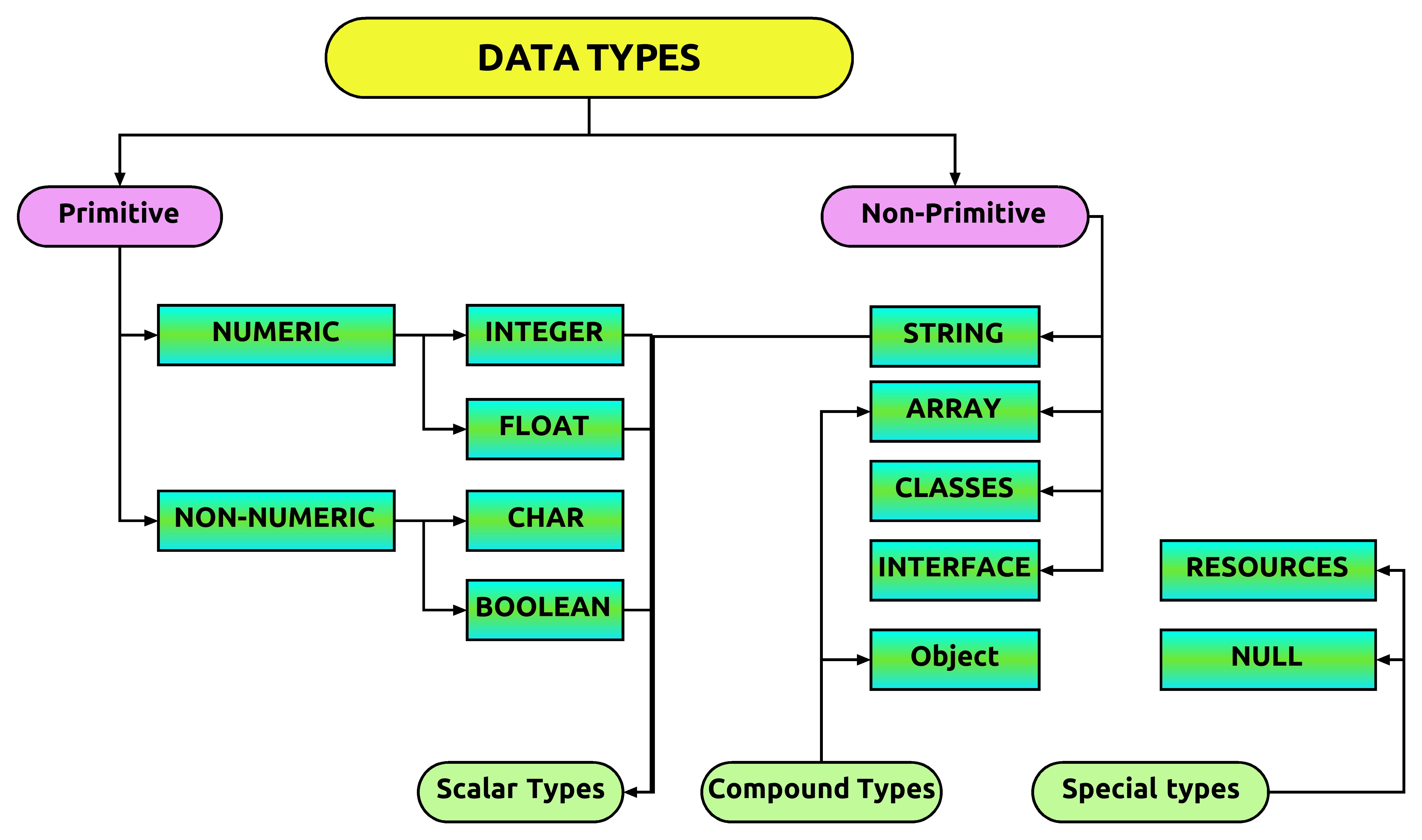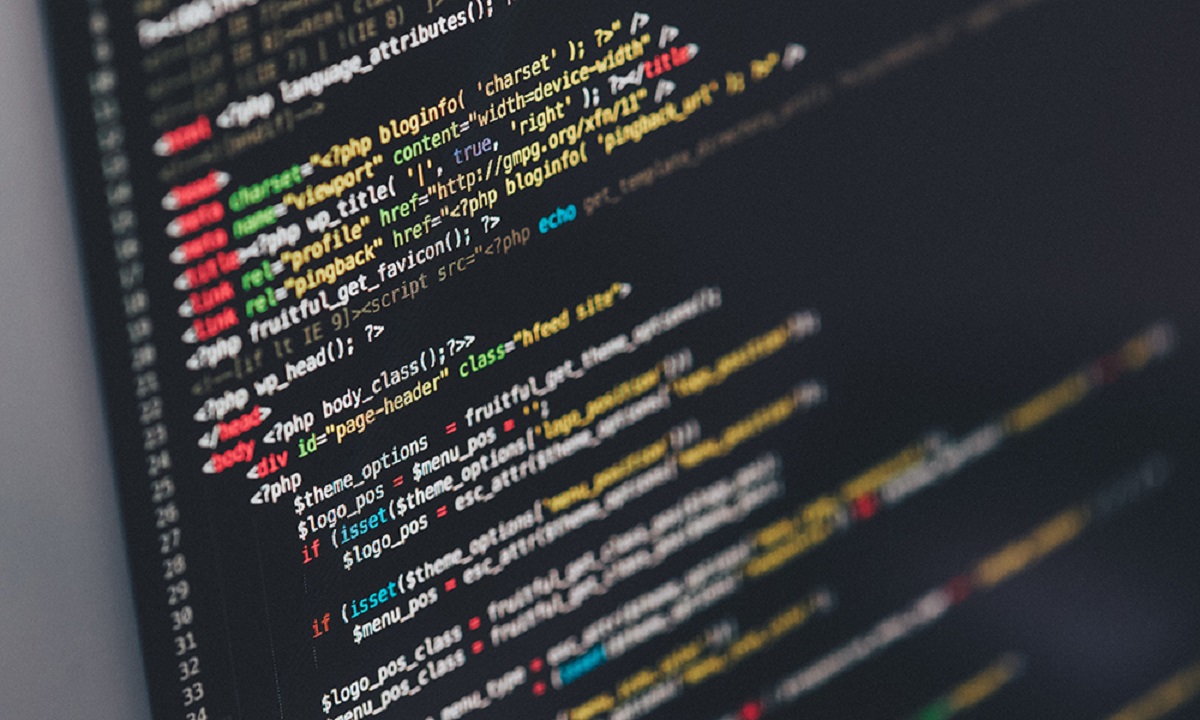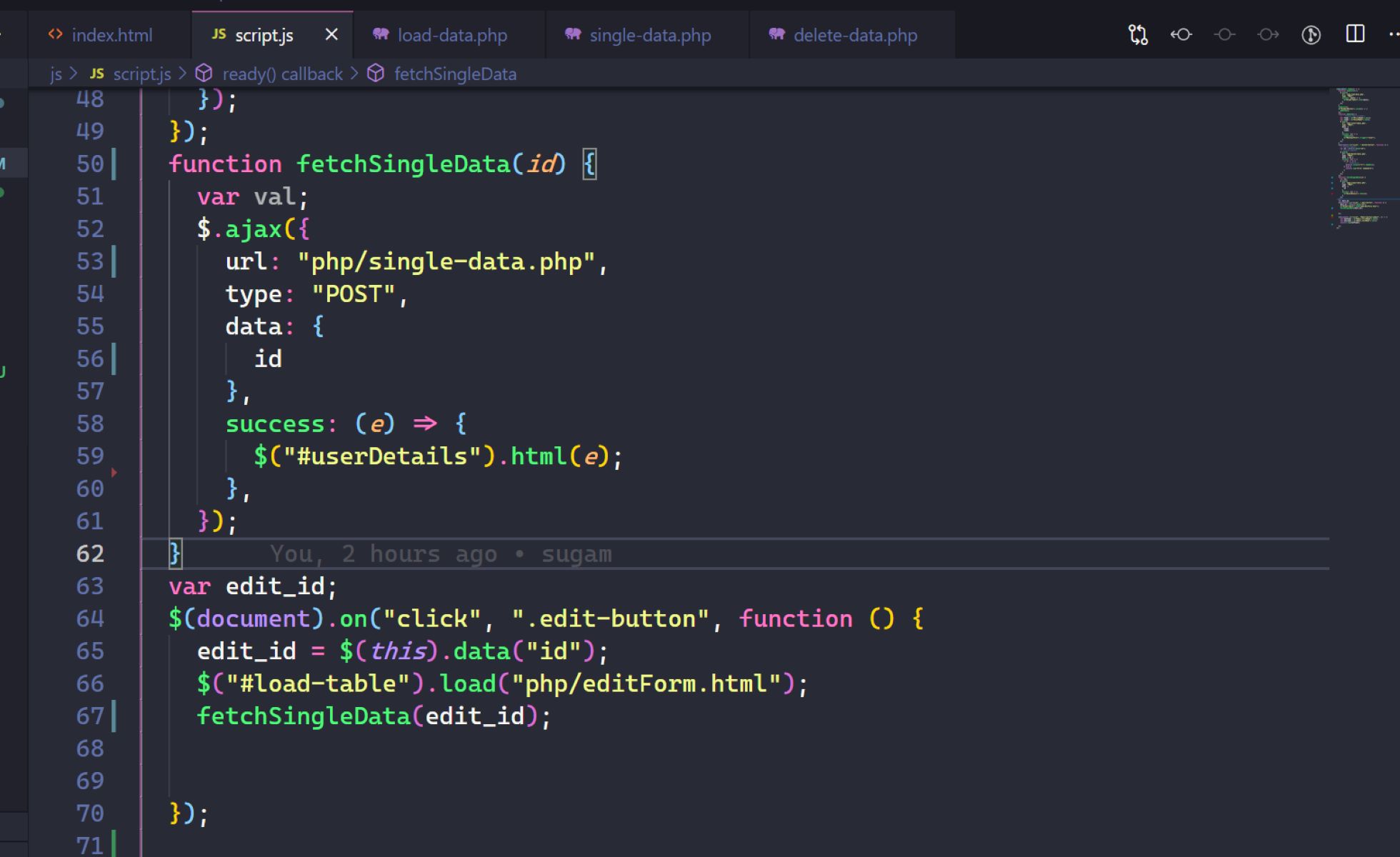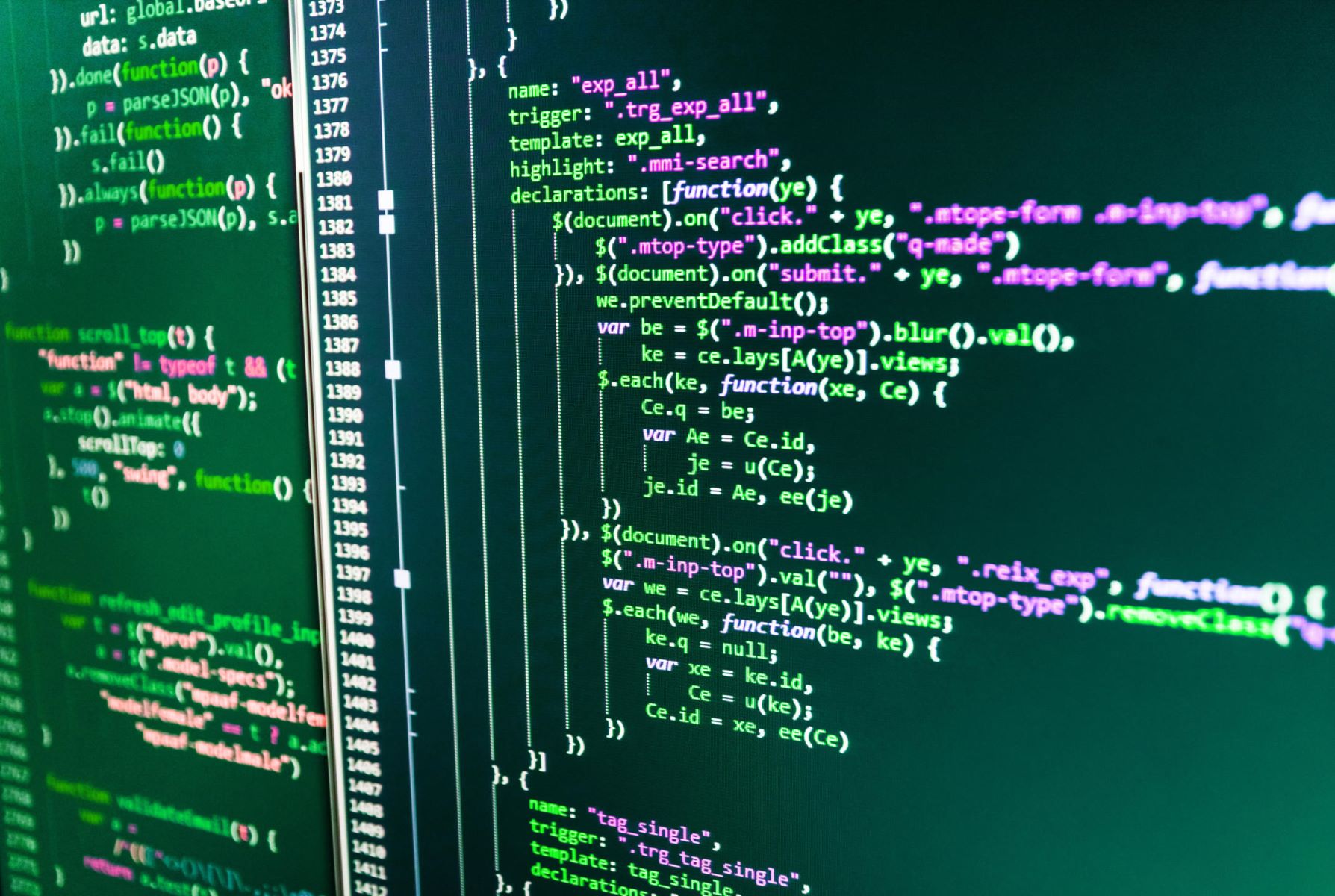Introduction
Welcome to the world of coding! As you delve deeper into the realm of programming languages, you are bound to come across the fascinating concept of Boolean. Whether you are a beginner or already have some knowledge of coding, understanding Boolean is crucial to writing efficient and logical code.
Boolean is a fundamental concept in programming that deals with logical values – either true or false. It is named after the 19th-century mathematician and logician George Boole, who introduced the concept of Boolean logic. Most programming languages provide built-in support for Boolean data types and operators, allowing developers to make decisions and control the flow of their code based on logical conditions.
In this article, we will explore the intricacies of Boolean in coding, starting with the basic values and operators, and moving on to conditional statements and Boolean logic. We will also discuss common situations where Boolean plays a vital role in coding. So sit back, relax, and get ready to dive into the world of Boolean in coding!
By understanding Boolean, you can unlock a powerful tool that allows you to create dynamic and responsive programs. So let’s get started on this journey of exploring the wonderful world of Boolean in coding!
What is Boolean?
Boolean is a fundamental concept in programming that deals with logical values. It is named after George Boole, a mathematician and logician who introduced the concept of Boolean logic in the 19th century. In programming, Boolean refers to a data type that can have one of two possible values: true or false.
The true value represents a condition that is considered to be correct or valid, while the false value represents a condition that is considered to be incorrect or invalid. These two values serve as the building blocks for decision-making in coding.
Boolean values are essential for control flow in programming. They allow programmers to create conditions that determine the path that a program takes based on the evaluation of these values. By using Boolean values, programmers can create programs that respond dynamically to different situations.
In programming languages, Boolean values are typically expressed using the keywords true and false. These values can be stored in variables, manipulated with operators, and used in conditional statements to control the flow of the program.
Understanding Boolean is crucial for writing efficient and logical code. By incorporating Boolean values and conditions into your programs, you can make your code more dynamic and adaptable. Whether you’re checking if a condition is true or false, toggling between different states, or performing logical operations, Boolean enables you to make informed decisions and create programs that respond intelligently.
Now that we have a basic understanding of what Boolean is, let’s delve deeper into the different Boolean operators and how they can be used in coding.
Boolean Values
Boolean values are an integral part of programming and represent the basic building blocks of logical expressions. As mentioned earlier, in programming, Boolean values can only have two possible states: true or false.
The true value represents the logical condition that is considered to be correct or valid. It indicates that a certain statement is true or that a condition has been met. On the other hand, the false value represents the logical condition that is considered to be incorrect or invalid. It indicates that a certain statement is false or that a condition has not been met.
Boolean values are often used in conditional statements and decision-making processes within a program. They allow programmers to evaluate different conditions and determine the appropriate action to take based on the outcome of those evaluations.
In programming languages, Boolean values are usually represented using the keywords true and false. These keywords are reserved and cannot be used as variable names or identifiers. When assigning Boolean values to variables, it is important to use the correct syntax and notation according to the programming language being used.
For example, in JavaScript, you can assign a true or false value to a variable using the following syntax:
javascript
var isTrue = true;
var isFalse = false;
Similarly, in Python, you can assign Boolean values using the following syntax:
python
is_true = True
is_false = False
Boolean values can also be the result of logical expressions and comparisons. These expressions can involve arithmetic operations, comparison operators, and logical operators. For example, a simple comparison expression using the equal-to operator might look like this:
javascript
var x = 5;
var y = 10;
var isEquals = (x == y); // false
In the above example, the variable `isEquals` will have a value of false, as the comparison `x == y` evaluates to false since 5 is not equal to 10.
Understanding Boolean values and how they are used in programming is crucial for building logical and robust programs. By utilizing Boolean values, you can create conditions and decisions within your code, allowing it to respond intelligently and handle different scenarios effectively.
Now that we have a good understanding of Boolean values, let’s move on to exploring the different operators used with Boolean values in coding.
Operators
In programming, operators are symbols or characters that perform specific operations on operands. When it comes to Boolean values, there are three main types of operators that are commonly used: comparison operators, logical operators, and assignment operators.
Comparison Operators
Comparison operators are used to compare two values and evaluate the relationship between them. They return a Boolean value based on the comparison result. Here are some commonly used comparison operators:
- Equal to (==): Checks if two values are equal.
- Not equal to (!=): Checks if two values are not equal.
- Greater than (>): Checks if the left operand is greater than the right operand.
- Less than (<): Checks if the left operand is less than the right operand.
- Greater than or equal to (>=): Checks if the left operand is greater than or equal to the right operand.
- Less than or equal to (<=): Checks if the left operand is less than or equal to the right operand.
For example, in JavaScript, you can use comparison operators to evaluate conditions:
javascript
var x = 5;
var y = 10;
var isEquals = (x == y); // false
var isNotEquals = (x != y); // true
var isGreater = (x > y); // false
var isLess = (x < y); // true
Logical Operators
Logical operators are used to combine or modify Boolean values. They allow you to perform logical operations on one or more Boolean values and return a result. Here are the most commonly used logical operators:
- AND (&&): Returns true if both operands are true.
- OR (||): Returns true if either of the operands is true.
- NOT (!): Returns the opposite Boolean value of the operand.
These logical operators are often used in conditional statements, where the flow of the program depends on the evaluation of multiple conditions.
javascript
var x = 5;
var y = 10;
var z = 3;
var isTrue = (x < y && z > x); // true
var isFalse = (x > y || z < x); // false
var isNotTrue = !(x < y); // false
Assignment Operators
Assignment operators are used to assign values to variables. While they are not directly related to Boolean values, they are important in manipulating and updating variables that store Boolean values. Some common assignment operators include:
- = (Assign): Assigns the value on the right to the variable on the left.
- += (Add and assign): Adds the value on the right to the variable on the left and assigns the result to the variable on the left.
- -= (Subtract and assign): Subtracts the value on the right from the variable on the left and assigns the result to the variable on the left.
- *= (Multiply and assign): Multiplies the value on the right with the variable on the left and assigns the result to the variable on the left.
- /= (Divide and assign): Divides the variable on the left by the value on the right and assigns the result to the variable on the left.
These assignment operators come in handy when updating the value of a Boolean variable based on certain conditions or calculations.
By understanding and using these operators, you can perform complex operations with Boolean values and create more dynamic and efficient code. Now, armed with knowledge of Boolean values and operators, let’s move on to exploring conditional statements in coding.
Conditional Statements
Conditional statements, also known as control structures, are an essential part of programming. They allow you to control the flow of your code based on certain conditions. With conditional statements, you can make decisions and execute different blocks of code depending on whether a specific condition is true or false.
In programming, there are various types of conditional statements, including:
- If Statement: The if statement evaluates a specific condition and executes a block of code if the condition is true. If the condition is false, the code within the if statement is skipped. It has the following syntax:
javascript
if (condition) {
// Code to be executed if the condition is true
}
- If-Else Statement: The if-else statement is an extension of the if statement. It allows you to define an alternative block of code to be executed if the initial condition is false. It has the following syntax:
javascript
if (condition) {
// Code to be executed if the condition is true
} else {
// Code to be executed if the condition is false
}
- If-Else-If Statement: The if-else-if statement allows you to evaluate multiple conditions by chaining several if and else-if statements together. It has the following syntax:
javascript
if (condition1) {
// Code to be executed if condition1 is true
} else if (condition2) {
// Code to be executed if condition2 is true
} else {
// Code to be executed if all conditions are false
}
Conditional statements are powerful tools that can be used to create branching logic in your code, allowing your program to make decisions and respond accordingly. Whether you want to execute alternative code blocks or handle different scenarios, conditional statements provide the mechanism to do so.
Here’s a simple example of using conditional statements in JavaScript:
javascript
var age = 18;
if (age >= 18) {
console.log(“You are eligible to vote.”);
} else {
console.log(“You are not eligible to vote yet.”);
}
In the above code, if the age is greater than or equal to 18, the message “You are eligible to vote” will be displayed; otherwise, the message “You are not eligible to vote yet” will be displayed.
By utilizing conditional statements, you can create programs that adapt and respond to different conditions and make informed decisions based on those conditions. Now, let’s explore how Boolean logic can be applied in coding.
Boolean Logic
Boolean logic is a branch of logic that deals with the manipulation and evaluation of Boolean values. It allows us to combine Boolean values, perform logical operations, and make more complex decisions based on multiple conditions. Understanding Boolean logic is essential for constructing sophisticated and dynamic code.
In Boolean logic, there are three fundamental logical operators: AND, OR, and NOT.
- AND (&&) Operator: The AND operator returns true if both operands are true. If any of the operands is false, the result will be false. The expression `(x && y)` will evaluate to true only if both `x` and `y` are true.
- OR (||) Operator: The OR operator returns true if either one or both of the operands are true. It returns false only if both operands are false. The expression `(x || y)` will evaluate to true if either `x` or `y` or both are true.
- NOT (!) Operator: The NOT operator reverses the Boolean value of its operand. If the operand is true, the NOT operator will return false, and if the operand is false, the NOT operator will return true. The expression `(!x)` will evaluate to true if `x` is false, and vice versa.
These logical operators can be used to construct complex Boolean expressions that evaluate multiple conditions. By combining these operators and using parentheses for precedence, programmers can create precise and concise expressions to control the flow and behavior of their code.
Here is an example of using Boolean logic in JavaScript:
javascript
var x = 5;
var y = 10;
var z = 3;
var result = (x > y || (z < x && y > z));
console.log(result); // true
In the above example, the expression `(x > y || (z < x && y > z))` uses both the OR and AND operators to evaluate multiple conditions. It returns true because either `x` is greater than `y` or `z` is less than `x` and `y` is greater than `z`.
Boolean logic allows programmers to create intricate decision-making processes and handle complex scenarios with ease. It’s a powerful tool that aids in designing code that is both efficient and logically sound.
Now that you have a good grasp of Boolean logic, let’s take a look at some common uses of Boolean in coding.
Common Uses of Boolean in Coding
Boolean values play a crucial role in coding and are employed in a wide range of applications. They allow programmers to make decisions, control program flow, and create dynamic and adaptive code. Here are some common use cases of Boolean in coding:
- Conditional Statements: As discussed earlier, Boolean values are often used in conditional statements to determine which code block should be executed based on certain conditions. Whether it’s an if statement, an if-else statement, or a more complex if-else-if statement, Boolean values are essential for controlling the flow of code execution.
- Loops: Loops are used to repeatedly execute a block of code until a certain condition is met. Boolean values are often used as the condition to determine whether the loop should continue or terminate. For example, in a while loop or a do-while loop, the Boolean condition determines whether the loop should continue executing or exit.
- User Input Validation: Boolean values are used to validate user input in forms or interactive programs. By checking user-provided data against certain criteria, such as checking if an input field is empty or if the input matches a specific format, Boolean values can be used to validate and ensure the correctness of user input.
- Error Handling: Boolean values are commonly used in error handling scenarios. For example, a function may return a Boolean value indicating whether an operation was successful or not. This allows the calling code to handle errors or failures appropriately and take actions based on the success or failure status.
- Flagging and Toggling: Boolean variables are often used as flags or toggles to indicate the status or state of certain features or functionalities in a program. By setting a Boolean variable to true or false, programmers can enable or disable specific functionality, control the visibility of elements, or trigger certain actions within the program.
- Conditional Rendering in Front-End Development: In front-end development, Boolean values are commonly used to conditionally render components, elements, or sections of a web page based on certain conditions. This allows for dynamic and responsive user interfaces that adapt and display content based on user interactions or internal state changes.
These are just a few examples of how Boolean values are utilized in coding. Boolean logic and operations provide programmers with the tools to create logic-based structures, make decisions, handle errors, and build interactive and adaptive applications.
With a solid understanding of Boolean values and their applications, you are now equipped to leverage their power in your own coding endeavors.
Conclusion
Boolean is a fundamental concept in coding that revolves around logical values, true and false. It enables programmers to make decisions, control program flow, and create dynamic and adaptable code. By understanding Boolean values, operators, conditional statements, and Boolean logic, you can unlock the potential to write efficient and logical programs.
In this article, we have explored the meaning of Boolean and its significance in coding. We have learned how Boolean values can be used to represent the truthfulness or falseness of conditions. We have also discussed operators such as comparison, logical, and assignment operators, which allow us to manipulate and combine Boolean values. Furthermore, we have examined conditional statements that enable us to control the flow of our code based on specific conditions. Lastly, we have explored Boolean logic, which empowers us to create complex decision-making processes in our code.
From user input validation to error handling, Boolean values find practical application in various areas of coding. They extend their utility in loops, conditional rendering in front-end development, and flagging or toggling certain features or functionalities. By leveraging Boolean values effectively, you can design code that is robust, responsive, and adaptable to different scenarios.
As you further develop your coding skills, continue to explore and experiment with Boolean concepts. Remember to utilize them in a way that results in clear, concise, and logical code. By harnessing the power of Boolean in your programming journey, you will be well-equipped to write code that is both functional and efficient.
Embrace the logic of Boolean and let it guide you in creating innovative and practical solutions. Happy coding!

























